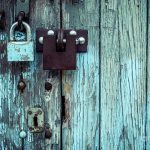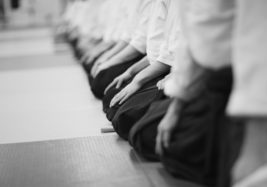Anxiety
There is a great deal of pain in life, and perhaps the only pain that can be avoided is the pain that comes from trying to avoid pain.
R.D Laing
Anxiety is an entirely normal response to anticipated danger and stress. However problems develop when anxiety gets stuck in us and we are unable to move back into relaxation after the danger passes or when we realise we were unduly worried. There are various physiological reasons why this may be the case, and why certain people are more prone to persistent anxiety. An important one of these reasons is a hyper-sensitive amygdala (the part of the brain that monitors incoming data and triggers the fight/flight response) as a result of trauma. You can read more about that specific situation here: https://www.unlearninganxiety.com/amygdala and here: https://www.psychologytoday.com/gb/blog/the-mindful-self-express/201809/how-ptsd-and-trauma-affect-your-brain-functioning).
Getting stuck in fear
Animals have the capacity to physically shake off the stress and associated hormones after a close encounter with a predator, and are able to very quickly move back into a relaxed state. People who struggle with anxiety (which is a lot of people!), tend not to do that and instead the fear becomes stuck, perhaps it becomes detached from its original source or trigger and becomes a vague generalised sensation, looking for new objects to attach itself to. People might think: I’m anxious because the door is unlocked, so they lock the door. But then the anxiety starts roaming around looking for a new justification: I’m anxious because I only have a single lock on my door. And so on…
People can become habituated to the experience of anxiety and feel strangely off without it.
People who suffer from anxiety or excessive worrying often tell me that they MUST have something to worry about. If they suddenly don’t have anything left to worry about (because things are generally ok), they panic and quickly find something to fill that opening. They don’t know what is left of them, who they would be without the worry and the fear.
Death
These common anxieties about our day to day lives serve as convenient distractions from the big one: death! Ordinary anxiety is often a smokescreen that distracts us from the scary groundlessness that underlies our life. Our own mortality and the inevitability of it, are so overwhelmingly distressing that we occupy our mind with many other small worries and anxieties which really mask our fundamental discomfort and powerlessness in the face of death.
But what if you were to allow that emptiness…and really let it in, and not run away from it all the time? Perhaps then you would discover that actually there is, paradoxical as it may sound, a fullness and a joy to that emptiness. And you will perhaps be able to contact an experience that is deeper than your thoughts your conditioned personality and ego.
Control
Most people tend to be very afraid of the contents of their own minds. They would much prefer to avoid spending time with their own minds, and instead choose to distract themselves at every turn. There is a fear of what might happen if they were to let in their emotions or experiences, let them really penetrate. There is a fear that they won’t be able to cope, will be overwhelmed and wiped out, that they will completely fall apart. So instead of taking that risk, they construct a persona that is focused on presenting a suitable image to the world. They expend a lot of energy on trying to control their emotions and experiences. They might avoid certain anxiety provoking situations, thereby reinforcing the belief that those situations are scary (why else would they need to be avoided?) and meanwhile the gap between their inner experience and their outer presentation widens, adding to their level of distress and anxiety.
A lot of people that come in to see me are very worried about losing control. To cry or to show ‘what is really happening’ is experienced as humiliating and an indicator of weakness. The energy expended on keeping control, and keeping tight lids on various boxes (containing painful emotions and traumatic memories) is considerable. And the psychological tension this generates, expresses itself physically in symptoms of anxiety.
This fear of pain adds a new layer of pain (what the Buddha might call a second dart). So in order not to add more pain, you need to fully feel the initial pain. This is unpleasant and uncomfortable, and requires some level of distress tolerance. On the other hand, you might discover that the pain, stripped of its second dart embellishments, isn’t actually as bad as you thought.
There is a huge freedom in surrendering control. Perhaps not on the concrete level of our day to day life, because of course we want to choose where we work and what we eat, but as an inner experience. If you are able to surrender to the expansive stream of life, you can experience your ‘conditioned self’ from a larger more encompassing perspective, which helps you connect to a deep sense of confidence and holding, that is always there.
Calming the system
On a slightly less abstract level, we can learn very practical techniques to calm our nervous system and reduce the physical symptoms of anxiety.
When we experience anxiety, everything becomes faster and more complicated, everything is rushed and overwhelming. We need to come down, we need to connect with the earth and the basic ground of being, with the basic simplicity of being alive.
We also need to cut through the attachment to the cluster of complex thoughts and worries. We cannot solve it, or fix it. We cannot figure it out. The more we think, the more layers of complexity we add. Instead we need to shift our focus and reconnect to the basics of reality as it presents ourselves right now right here. Our breath, our feet on the floor. The simple facts.
In this way we gradually, very gradually, alter our neural pathways and our mental habits. Meditation, mindfulness, Heart Math and yoga are all ways of doing that.
In addition to body based awareness work, like the approaches listed above- which are really vital when it comes to dealing with anxiety, talk therapy can also help to gain clarity and insight into persistent mental and behavioural patterns and let go of them.
In the contained space of the therapy room, people feel a little safer to begin opening those scary boxes and letting in the pain that they have been working so hard to keep out. It’s only one hour a week, so the dosage feels manageable.
In addition, herbal medicine can be a huge help in supporting and calming an agitated nervous system.
Awareness
What keeps us stuck in anxiety is our inability to see through our own distortions. Even though we may rationally understand that we see the world through a filter that is shaped and coloured by our previous life history and culture, we cannot drop that filter, so we get stuck in our way of seeing things and believe the stories we tell ourselves.
So, one of the steps in dealing with anxiety, alongside the work on calming the system, is to increase awareness of our mental and behavioural habits to take a look at all our narratives. How do we respond to internal and external situations? Be it our own thoughts, feedback from outside or social situations. What is the mental loop that we get stuck in? Once you have that awareness you can start inserting wedges into that cycle and develop a different relationship with your own mind and body.
With the help of acceptance and self compassion practices we may begin to feel less resistant towards the fears and our recurring thoughts. We may start to see how they have some roots in our childhood schemas and extend even further kindness to them- the feeling of shame and being intrinsically wrong begins to lessen. With our acceptance, our fears become less insistent and a little more fluid, it becomes easier for the thoughts and worries to move on when we are no longer fixated and obsessed.
We learn to let go and relax with what is.






